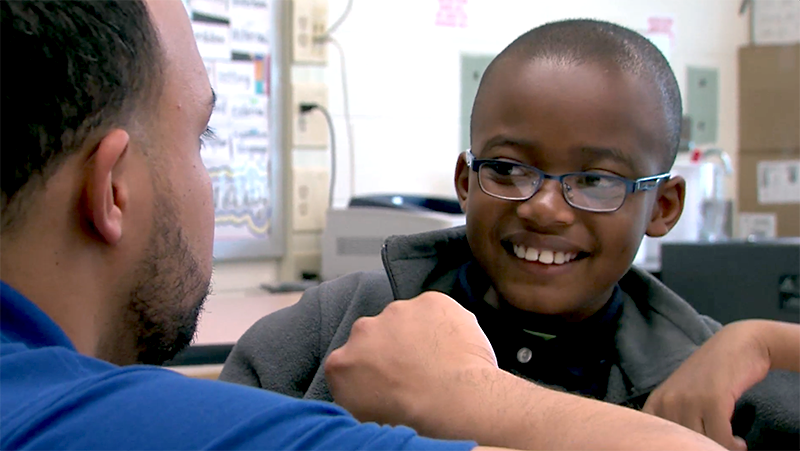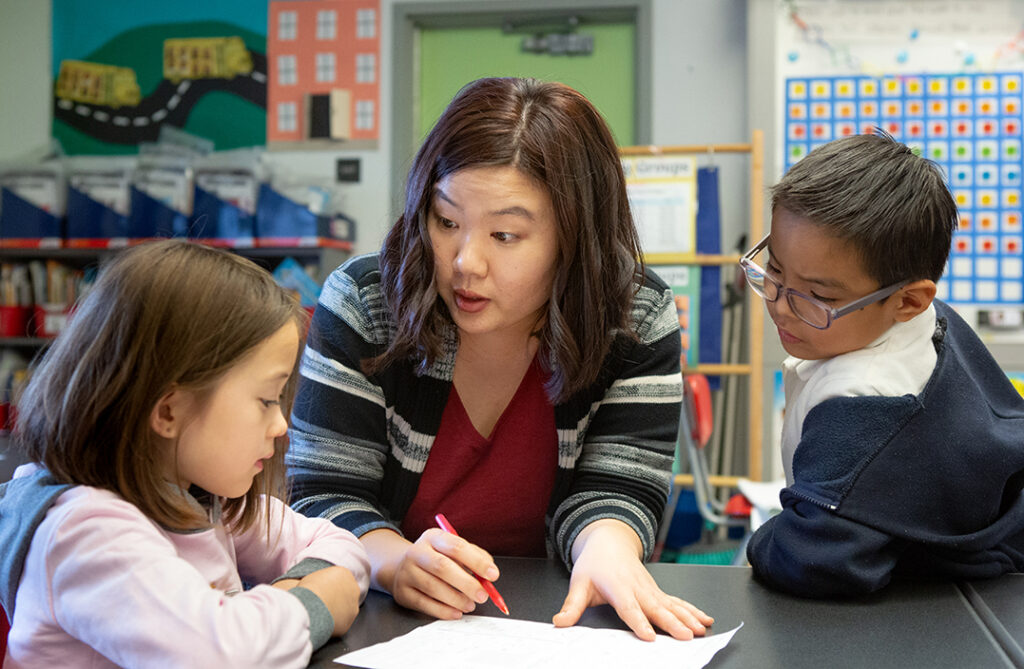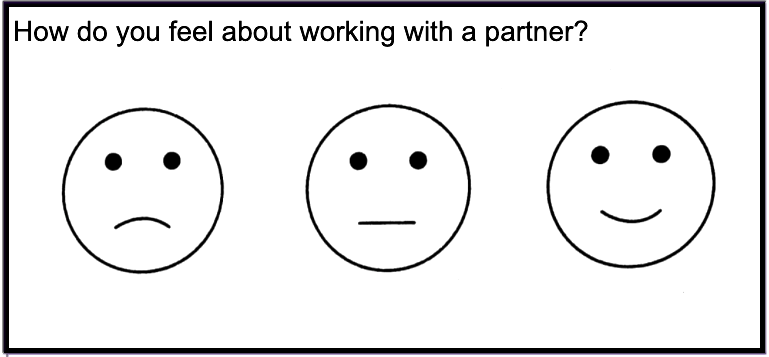What Do Your Students Think about Math? Student Reflection as a Tool for Finding Out
by Marta Garcia and Annie Sussman
October 11, 2023
“To experience agency, you must first feel that your core identity —
—Safir and Dugan, Street Data, p. 102
your ways of being, learning and knowing in the world — is valued”

In a prior blog, Student Reflection: Why Ask Students What They Think About Math?, we discussed the importance of providing students with time and space to reflect on their math identities and their role in the math classroom community. In order to develop a classroom community that encourages and incorporates students’ ideas and agency, we need to be aware of opportunities that allow us to learn more about our students.
Thinking about the questions we should be asking, and when and how we ask them, is an important part of incorporating student reflection into our practice. Once we have established goals related to learning about our students, we can select appropriate questions and prompts.
- What do I want to know about my students at this point in time?
- What type of question would best support them in reflecting on a specific component of the math community? Of their math identity?
- How can I encourage students to reflect on themselves as math learners?
For example, after the first few weeks of school, Ms. Diaz was interested in knowing how her students (particularly a small group that was reticent to share ideas both in small and whole group discussions) were thinking about math class. She hoped that the responses would allow her to better understand how her students were experiencing math class, particularly how they were seeing the value of listening to the ideas of others, and whether they felt their ideas were valued. She created a survey to gather that information, asking two questions:
• Do you think your classmates and your teacher value your ideas? Why or why not?
• Do you think it is important/useful to listen to the ideas of others? Why or why not?

We may choose to ask a question in the middle of a lesson if we notice that our students would benefit from reflecting on, say, the ways in which partner talk can help them understand the math ideas of a game. We may pose a question(s) at the end of a lesson to give us feedback on student engagement. We may note that a student’s identity or status is impacting their engagement, and so use a one-to-one interview to better understand their strengths and perspectives. It is important that our questions be focused and promote deep reflection. It is also important that we pose the same questions more than once, so we can see if students’ responses are changing/developing over time. Below are a few examples of questions/prompts that invite student reflection:
- What has math class been like for you in school so far?
- What have you liked/disliked about school math?
- Do you have a positive memory you’d be willing to share? A negative memory?
- Do your friends like math class? What do they say about math?
- What would you like for your math teacher to do and say?
- I wish my teacher knew that during math class I _____________.
- I learn math best when________________.
- For primary students:

Different insights into how students are experiencing math class emerge depending on the methods used for gathering this information. For example, the questions listed above could jumpstart a class discussion or be used as an exit ticket or journal prompt to collect input from the entire class. We might meet with a small group to discuss a specific classroom agreement, or interview an individual student one-on-one about an aspect of their math identity. Incorporating classroom discussions and interviews that encourage students to develop an awareness of and reflect on their current feelings about being learner of mathematics, acknowledges and welcomes students’ varied identities and competencies.
In the following vignette we see how Mr. Ryder intentionally uses a variety of student reflection methods with his second-grade students.
At first, I wasn’t sure that my second graders would have a lot to say about themselves as learners of mathematics. But I have started putting aside some time to discuss how they are feeling about their participation in our math discussions. I have used whole group talks and surveys with emoticons. But what has really impacted my understanding of some of my students who were not participating as fully as I would have liked, was taking three to five minutes to do short interviews. I found that some of my students were not feeling valued or invited, and that part of that was my own role in who I was calling on and how I was setting up discussions.
Mr. Ryder’s comments highlight the importance of being curious about what you are noticing and flexible and persistent in how you investigate. In this case, short 1:1 interviews provided additional feedback that was critical to thinking about the creation of a more equitable learning community.
When we ask and discuss questions about students’ feelings about mathematics and about themselves as learners, we acknowledge and welcome their varied identities and competencies. When we open our eyes and ears to observe and listen to the voices of our students, we are working toward an equitable community. Students who are part of a classroom community that embraces open communication focused on what they are learning and how they see themselves as learners are empowered to take ownership of their mathematical stories. They can create their own positive math identities and journeys.
Note: This blog is the second in a series about student reflection. Read the first here. The third and fourth focus on teachers’ experiences with a Student Reflection Tool.
References
Garcia, Marta & Sussman, Annie (2023, October 13). Student Reflection: Why Ask Students What They Think About Math. Math Equity Forum Blog.
Safir, Shae and Dugan, Jamila. (2021). Street Data: A Next-Generation Model for Equity, Pedagogy, and School Transformation. CA: Corwin Press.

Search for related blog posts
